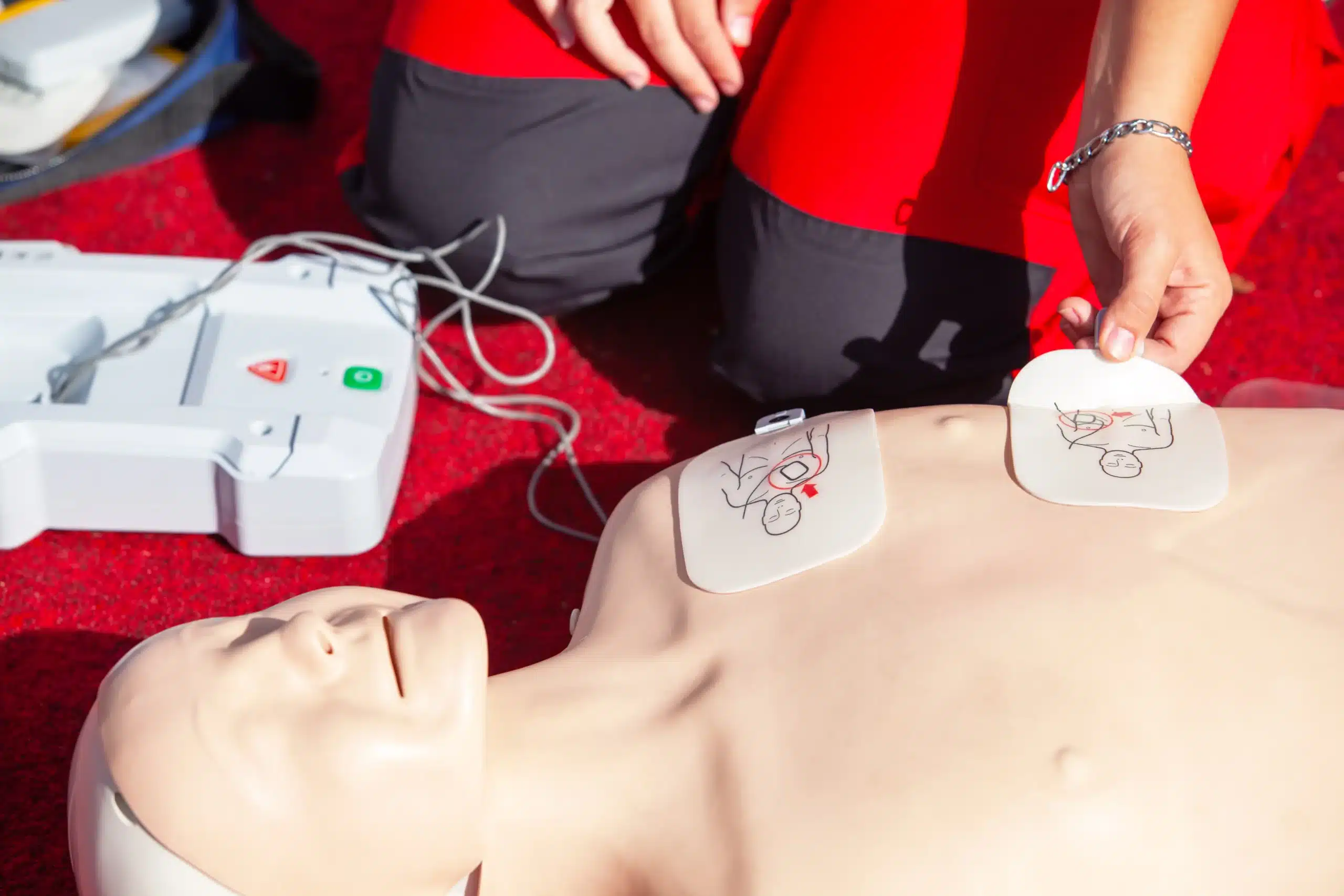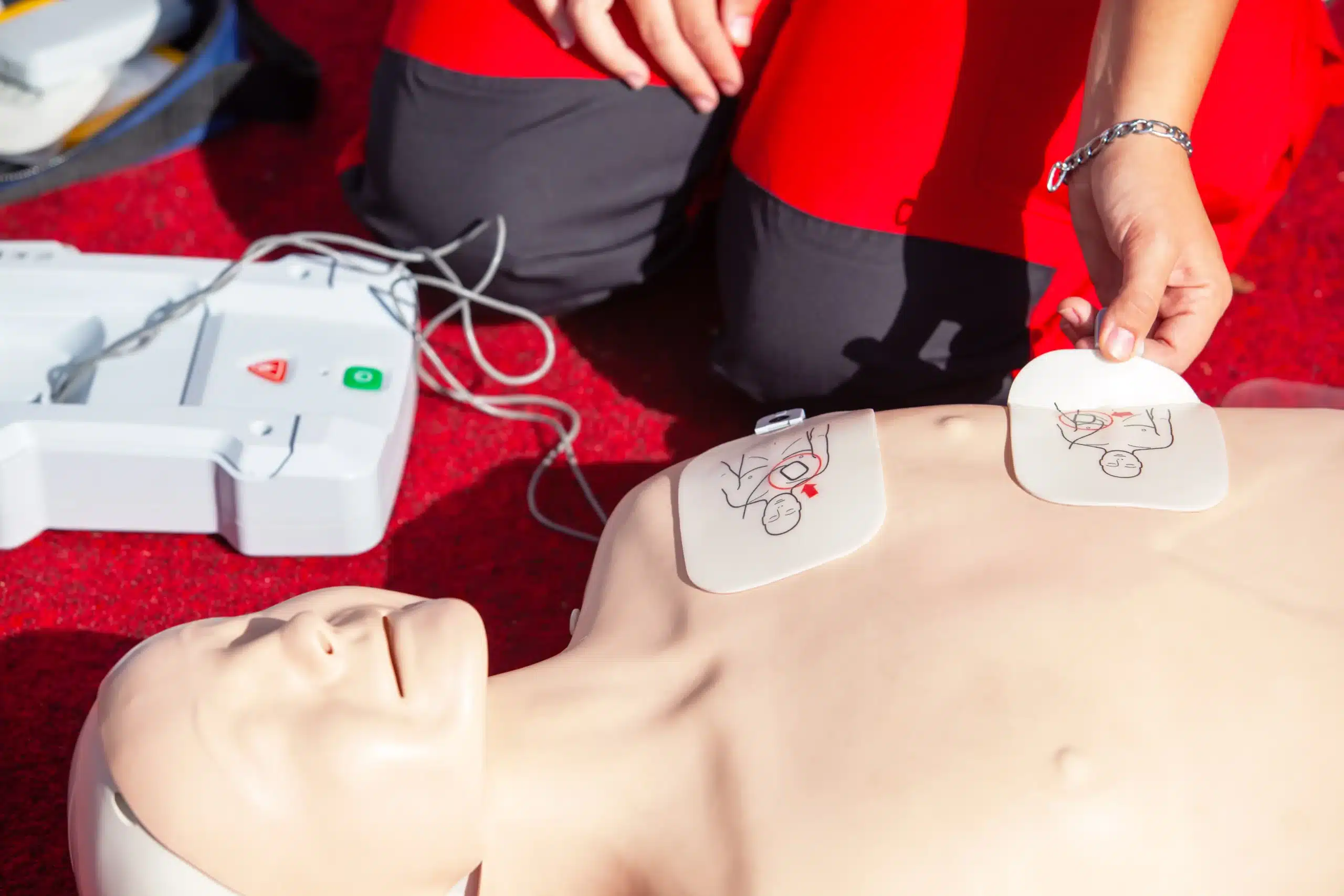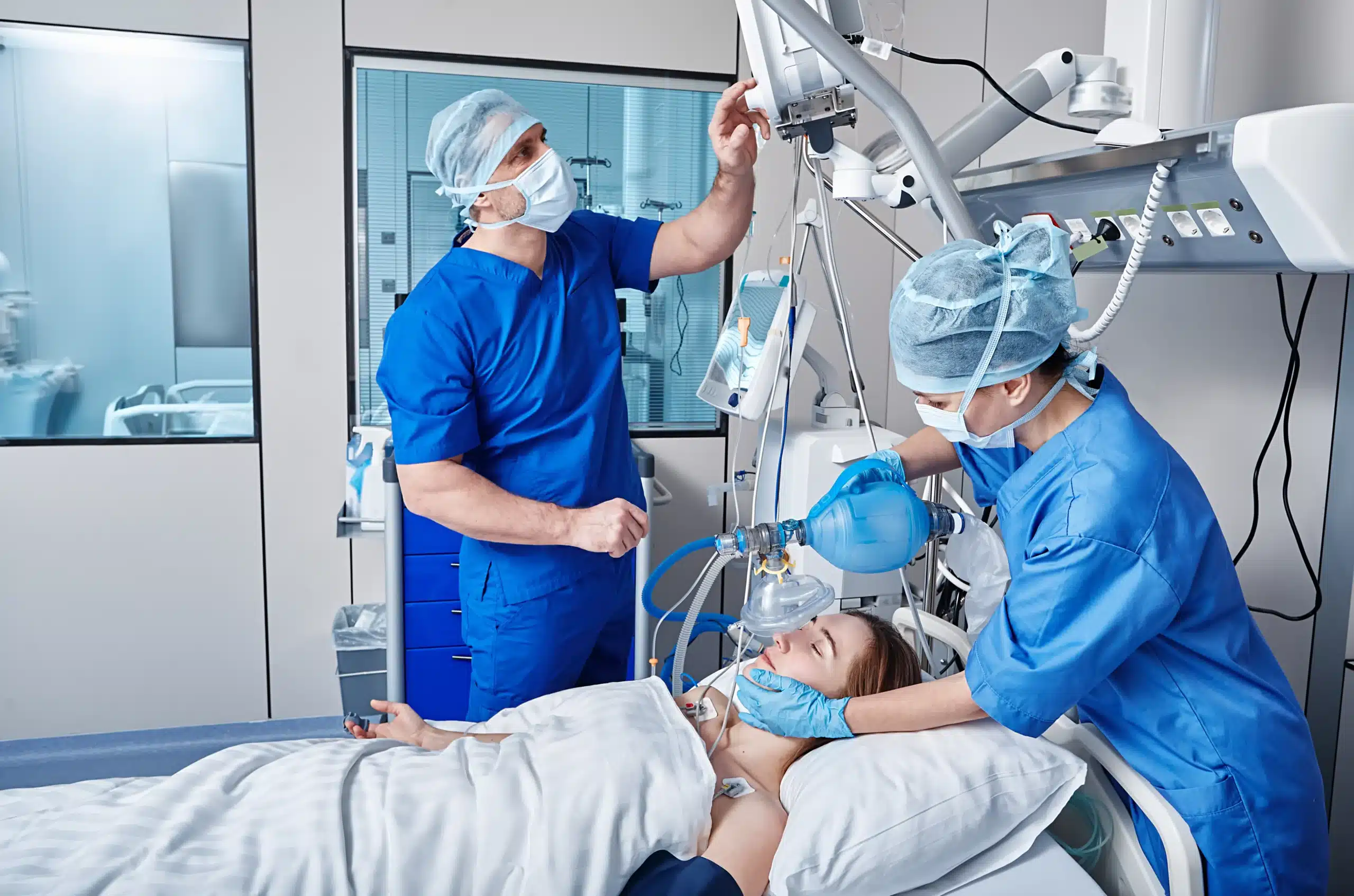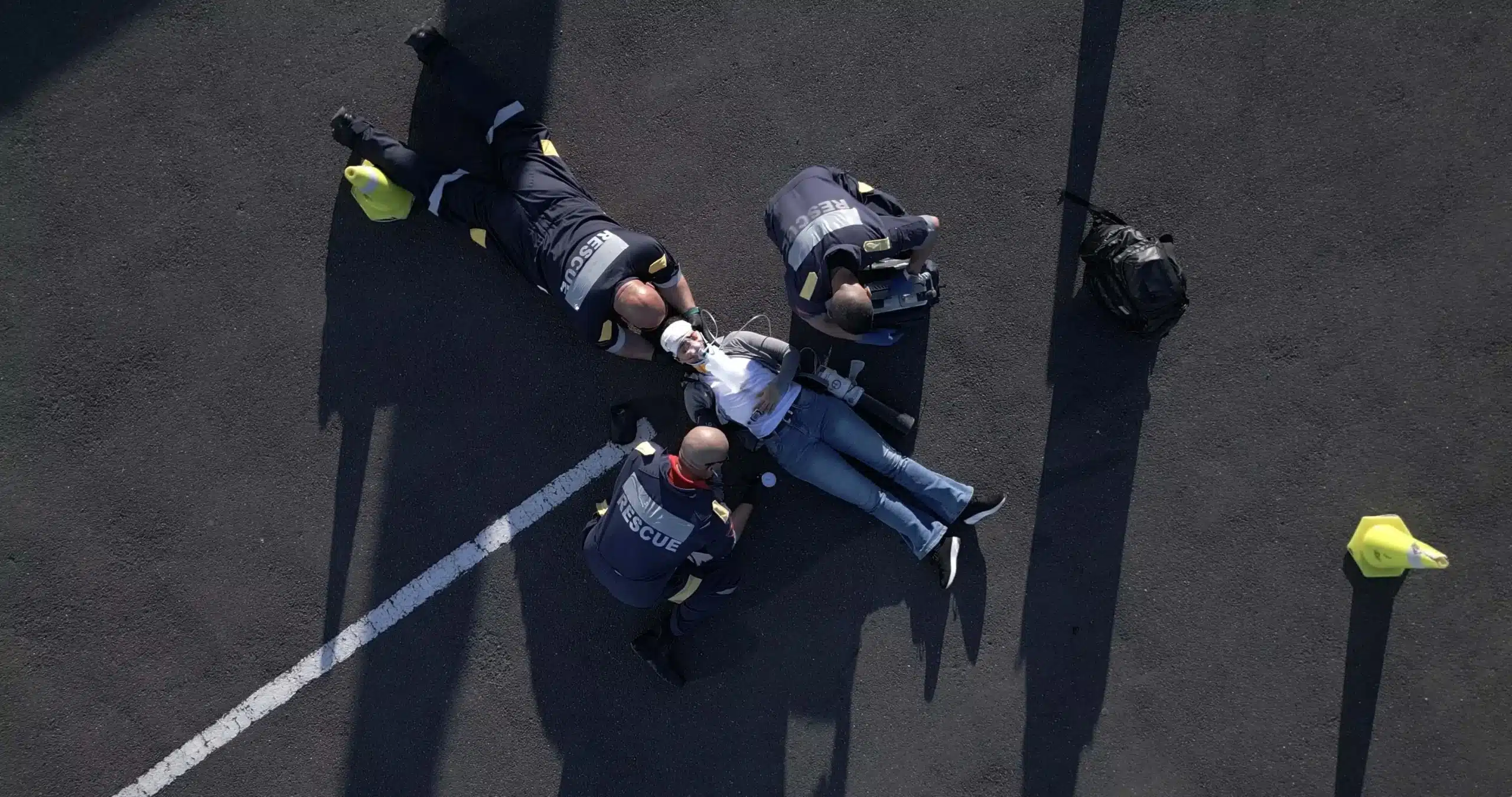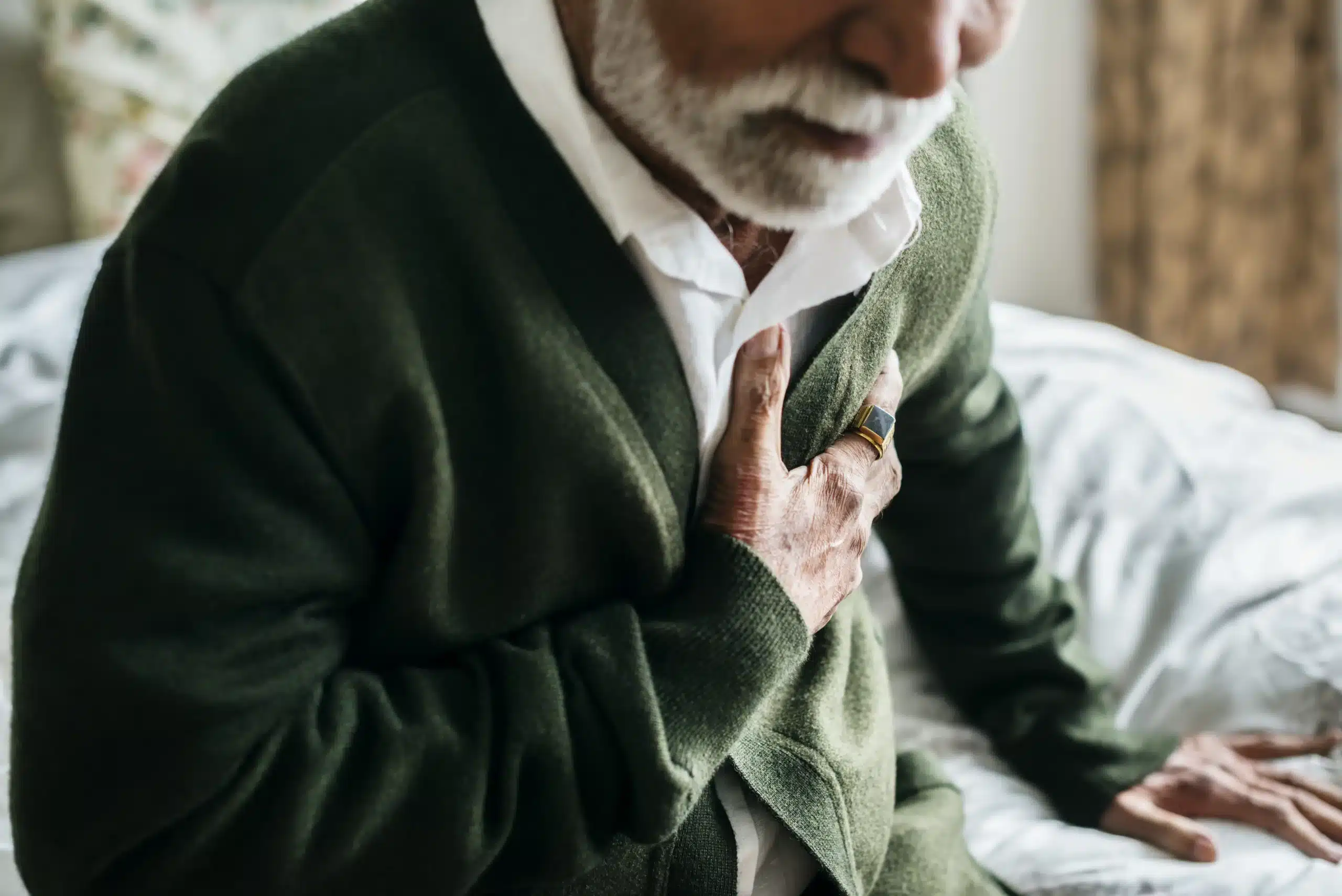Emergencies can happen anytime, anywhere. Being equipped with CPR and first-aid skills can make you a vital resource in those critical moments. This guide explores the importance of CPR and first-aid training in Union City, providing a clear path to finding the right course for you. We’ll cover the various types of training available, including in-person classes, online courses, and blended learning programs. Whether you’re a healthcare professional seeking recertification or a concerned individual wanting to learn these essential skills, we’ll help you navigate the options for CPR and first-aid in Union City. We’ll also discuss the costs associated with training and highlight potential discounts, ensuring you get the most value for your investment.
Key Takeaways
- CPR and first aid skills empower you to handle emergencies: Whether you’re a healthcare provider or simply want to be prepared, these skills can make a real difference. Find a reputable training center like San Leandro CPR Classes for quality instruction.
- Flexible training options make learning convenient: Explore in-person, blended learning, or online courses to fit your schedule and preferred learning style. Look for group discounts to save on costs.
- Stay current with your certifications: Regularly renew your CPR and first aid credentials to maintain your skills and preparedness. Consider the RQI program for a fast and efficient renewal process.
What are CPR and First Aid?
CPR and first aid are essential life-saving skills. While often mentioned together, they address different medical emergencies. CPR, or Cardiopulmonary Resuscitation, focuses on restoring breathing and circulation in individuals experiencing cardiac arrest. This typically involves chest compressions and rescue breaths. First aid encompasses a broader range of responses to various injuries and illnesses—your toolkit for handling everything from minor cuts and burns to more serious situations until professional medical help arrives.
What CPR and First Aid Training Entails
CPR training teaches you the proper techniques for performing chest compressions and giving rescue breaths. You’ll learn how to recognize the signs of cardiac arrest and respond quickly and effectively. First aid training covers a wider array of skills, such as how to control bleeding, manage fractures, treat burns, and handle allergic reactions. San Leandro CPR Classes offers comprehensive training in both CPR and first aid, equipping you with the knowledge and confidence to handle various medical emergencies. These courses often include hands-on practice and simulations to solidify your understanding and build your comfort level.
Why Certification Matters
Holding a CPR and first aid certification demonstrates your competency in these life-saving skills. It’s not just for healthcare professionals; certifications like Basic Life Support (BLS) are valuable across many professions. From teachers and childcare providers to construction workers and office personnel, having certified individuals on-site can significantly improve outcomes during emergencies. Certification can also be a job requirement or necessary for volunteer opportunities. A certification provides peace of mind, knowing you’re prepared to help in a crisis. Certifications are typically valid for two years, giving you ample time to use your skills. Consider exploring the RQI program for a faster certification process.
Find CPR and First Aid Training in Union City
Whether you’re a healthcare professional, a childcare provider, or simply someone who wants to be prepared for emergencies, finding the right CPR and first aid training in Union City is crucial. Luckily, there are several options available to fit your needs and schedule.
In-Person Courses
Traditional in-person courses offer a hands-on learning experience with direct interaction with instructors and other students. These courses cover essential techniques, from basic life support to using an AED. The structured environment of in-person training allows for immediate feedback and personalized guidance.
Online and Blended Learning
For those seeking more flexibility, online and blended learning programs are a great option. Blended learning combines online coursework with in-person skills sessions. This approach allows you to learn at your own pace and then practice your skills in a real-world setting. Fully online courses are also available for certain certifications, providing ultimate convenience.
Local Training Providers
Several organizations in and around Union City offer CPR and first aid training. Here are a few options:
San Leandro CPR Classes
San Leandro CPR Classes provides a variety of American Heart Association certification courses, including BLS, ACLS, PALS, and First Aid. They are known for their excellent customer service and convenient training options for residents of San Leandro, Hayward, and Union City.
American Red Cross
The American Red Cross offers various CPR and first aid courses, including CPR/AED training and certification. They provide in-person, online, and blended learning options to suit different learning styles.
Union City Fire Department
Check with the Union City Fire Department for information on CPR and first aid training opportunities. Local fire departments often partner with community organizations to offer these courses.
Hudson Regional Health Commission and Union City Health Department
The Hudson Regional Health Commission, in partnership with the Union City Health Department, occasionally offers free CPR training events. Check the Union City Library website or contact the Union City Health Department directly for upcoming training dates and other resources.
CPR and First Aid Training Costs & Discounts
CPR and first-aid training are valuable investments, but understanding the costs can feel tricky. Let’s break down what influences pricing and how you can find the best value for your training.
Average Course Prices
CPR class costs in Union City depend on a few things: the type of course, the training organization, and whether you’re learning with a group. Basic CPR and first-aid classes typically range from $75 to $125 per person. More advanced courses like ACLS or PALS for healthcare providers usually cost more, between $150 and $250. Check with your chosen provider for their specific pricing.
Factors Affecting Costs
Several factors influence CPR and first-aid training costs. The course type matters—basic CPR is generally less expensive than specialized certifications like BLS for Healthcare Providers. The training provider also sets their own pricing, so comparing options is always a good idea. Group discounts can significantly lower the per-person cost, so consider this if you’re training with friends, family, or colleagues.
Free and Discounted Training
While less common, free or discounted CPR and first-aid training might be available through community organizations or government programs. Check with your local fire department, health department, or community centers for potential opportunities. Organizations like the American Red Cross sometimes offer discounted courses, so exploring their website for current promotions is worthwhile.
Group Discounts and Competitive Pricing
If you’re training with a group, look for providers offering discounts. San Leandro CPR Classes is known for its competitive pricing and group discounts, making it a convenient option for groups in San Leandro, Hayward, and Union City. Contact different providers and ask about special offers to find the best fit for your needs and budget. Comparing pricing and exploring options like a low-price guarantee can help you save money while getting high-quality training.
Choose a Credible Training Provider
Finding the right CPR and First Aid training provider is crucial for a valuable learning experience. Here’s what to consider when making your decision:
Accreditation and Certification Standards
Look for training providers accredited by reputable organizations like the American Heart Association. Accreditation validates that the program meets industry standards and best practices, ensuring you receive high-quality training that follows established guidelines. San Leandro CPR Classes offers AHA-compliant courses, giving you confidence in the quality of your certification. Independent verification from organizations like the International Accreditation Service (IAS) provides extra assurance that the training agency, instructors, and curriculum meet recognized standards.
Instructor Qualifications
Experienced and certified instructors are essential for effective training. Check the provider’s website for instructor bios or resumes to confirm their expertise and up-to-date certifications. Don’t hesitate to contact us with any questions about instructor qualifications.
Reputation and Reviews
Reading reviews and testimonials from past students offers valuable insights into the training experience. Positive feedback and comments about the content, delivery, and learning environment can give you confidence in the provider’s reputation and course quality.
Verify Provider Credibility
Before committing to a course, verify the provider’s legitimacy and ensure their certifications are recognized in your field. You can often verify certifications through the issuing organization’s website. For instance, Aciedu offers a certificate verification service. Choosing a credible provider ensures your certification is valid and respected.
Benefits of CPR and First Aid Certification
Getting certified in CPR and first aid isn’t just about acquiring a skill—it’s about empowering yourself and making a real difference. These certifications offer a range of benefits that extend beyond your personal life and into your community and career.
Increased Safety Awareness and Confidence
CPR and first aid certification equips you with the knowledge and skills to respond effectively in medical emergencies. This training instills confidence, allowing you to act quickly and decisively when every second counts. You’ll learn to assess situations, provide basic life support, and manage injuries until professional help arrives. This newfound confidence can also foster a greater sense of overall safety awareness in your daily life.
Career Advancement
For many professions, CPR and first aid certifications are essential. Healthcare professionals, educators, childcare providers, and those in fitness and recreation often need these certifications to secure or advance in their roles. Even if not mandatory, having these credentials demonstrates a commitment to safety and preparedness, making you a more valuable asset to any team. It can open doors to new opportunities and enhance your professional profile. Check out our CPR and First Aid classes in San Leandro.
Community Impact and Personal Growth
Becoming CPR and first aid certified allows you to contribute positively to your community. You become a valuable resource, capable of assisting family, friends, neighbors, and even strangers during emergencies. Community programs often emphasize the importance of CPR training in creating safer environments for everyone. Knowing you have the skills to potentially save a life brings a sense of personal fulfillment and strengthens your connection to your community.
Save Lives
Ultimately, the most significant benefit of CPR and first aid certification is the potential to save lives. In emergencies, rapid intervention is crucial. CPR and first aid can bridge the gap between the incident and the arrival of professional medical help, significantly increasing the chances of survival. Knowing how to respond effectively can make all the difference.
Start Your CPR and First Aid Training
So, you’re ready to learn CPR and first aid? Great! This section breaks down the steps to get you started and keep your skills sharp.
Select the Right Course
First, think about which course best fits your needs. Union City offers a range of CPR courses, from basic life support to more advanced certifications like BLS, ACLS, and PALS. CPR class costs in Union City depend on a few factors: the type of course, the training provider, and whether you’re learning on your own or with a group. See if you qualify for reduced pricing with our group discount options.
Prepare for Your Training
Once you’ve chosen a course, it’s time to prepare. Select a CPR training provider carefully. Look for AHA-accredited providers with experienced instructors, comprehensive course content, and flexible scheduling. Some providers offer blended learning (a mix of online and in-person instruction) or on-site group training, so you can find a format that works for you. Don’t hesitate to contact a potential provider with any questions. A good provider will be happy to address your concerns and help you feel comfortable.
Maintain and Renew Your Certification
Your CPR and first aid skills are valuable, but certifications do expire. Staying current is key to providing effective help in an emergency. For a streamlined renewal process, the RQI program at San Leandro CPR Classes provides a blended learning experience with online modules, skills testing, and same-day card issuance for BLS, ACLS, and PALS. This convenient option lets you quickly update your credentials. Remember, regular practice and renewal ensure you’re always prepared to help when it matters most.
Related Articles
- CPR Certification in Union City: Your Complete Guide – San Leandro CPR Classes
- CPR & First Aid Training in Hayward: Your Guide – San Leandro CPR Classes
- CPR Courses in Hayward: Your Complete Guide – San Leandro CPR Classes
- First-Aid Training in San Leandro: Your Complete Guide – San Leandro CPR Classes
- Online CPR Classes in San Leandro: Your Guide – San Leandro CPR Classes
Frequently Asked Questions
What’s the difference between CPR and first aid? CPR specifically addresses life-threatening breathing and circulation problems, usually caused by cardiac arrest. It involves chest compressions and rescue breaths. First aid is broader, covering a wider range of injuries and illnesses, from minor cuts to more serious situations requiring professional medical attention. Think of CPR as a specific tool within the larger first-aid kit.
How do I choose the right CPR and first aid class? Consider your specific needs and goals. Are you looking for basic life support training or a more advanced certification like BLS, ACLS, or PALS? Think about your learning style – do you prefer in-person classes, online learning, or a blended approach? Also, compare costs, schedules, and instructor qualifications to find the best fit.
Why should I get certified if I’m not a healthcare professional? CPR and first aid skills are valuable for everyone. Emergencies can happen anywhere, and knowing how to respond can save lives. Even if it’s not required for your job, having these certifications can increase your confidence and prepare you to assist family, friends, or even strangers in need. Plus, it can make you a more valuable employee or volunteer.
How much does CPR and first aid training cost? Costs vary depending on the course type, training provider, and any available discounts. Basic CPR and first aid courses typically range from $75 to $125 per person. More advanced certifications like BLS, ACLS, or PALS usually cost more. Look for providers offering group discounts or competitive pricing to find the best value.
How can I maintain my CPR and first aid certification? Certifications typically expire after two years. To stay current, you’ll need to renew your certification by taking a refresher course. Some providers offer streamlined renewal programs like the RQI program, which combines online learning with in-person skills testing for a faster and more convenient renewal process. Regular practice and staying up-to-date on the latest guidelines are essential for providing effective assistance in emergencies.


